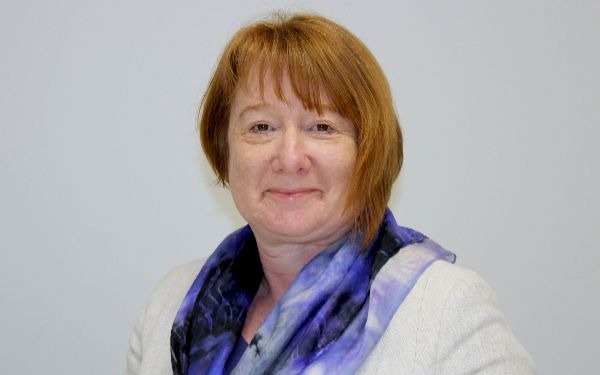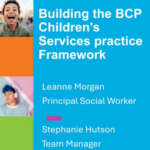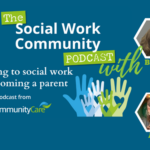
The number of mainstream children’s homes in England has grown by 44% over the past four years, amid a contraction in the fostering sector.
Children’s home numbers grew by 12% in the year to 31 March 2024, continuing significant increases seen in preceding years, showed Ofsted’s annual statistics on the social care sector, released last week.
The number of places in mainstream homes – a category which excludes secure units and homes also registered as residential special schools – has grown more slowly but still significantly, with a 28% rise, from 10,033 to 12,870, from 2020-24.
Reduction in foster carer numbers
The growth in the residential sector has accompanied a decline in the number of mainstream fostering households, a group which excludes family and friends carers.
Their number fell by 7% from 2019-23, from 37,520 to 35,005, with the number of approved fostering places dropping by 12%, from 78,995 to 72,770 over the same period (source: Ofsted).
The shift in provision is evident in statistics on where looked-after children are placed.
The number of placements in secure units, children’s homes and semi-independent living grew by 4,530 (to 14,580) from 2019-23, compared with an overall growth in the care population of 5,700 (to 83,840).
Over the same period, the numbers in foster care grew much more slowly, by 1,260, to 57,020 (source: Department for Education).
Children’s homes ‘in wrong places’
As in previous years, Ofsted’s data showed there were significant disparities in the distribution of homes and places between regions. The proportion of places ranged from 6% in the South West and 8% in London to 22% in the North West, significantly above that region’s share of looked-after children (18%).
Speaking to the Association of Directors of Children’s Services (ADCS) conference last week, Ofsted’s national director for social care, Yvette Stanley, said this reflected the lack of control over where homes are established.
“The homes are still in the wrong places,” she said. “We can’t stop the homes where there’s saturation nor is anyone stimulating growth where they are needed.”
Skills concerns despite improved performance
Ofsted’s data showed that performance among mainstream children’s homes had improved, with the proportion rated good or outstanding as of March 2024 standing at 83%, up from 80% a year earlier.
Despite the improving performance, Stanley raised concerns about skills levels in the residential sector.
“We have some real challenges out there,” she told the ADCS conference. “The needs of the children out there are growing, and we also know that our providers…have difficulty recruiting staff with the training and skills to work with those children.”
She added: “We must acknowledge that there are places where children really aren’t having their needs met – not many, but it’s really awful when I see them.”
Qualification levels falling
In its annual report last year, Ofsted said 54% of children’s homes staff of children’s home staff held a level 3 qualification, down from 61% four years ago. Regulations require homes to ensure staff are level 3 qualified within two years of starting work.
Providers and councils reported that staff in roles that required few or no qualifications were moving to better-paid jobs in other industries, while more qualified workers were moving into higher-paid agency roles, the regulator said.
Stanley urged directors to work with Ofsted to “nudge” providers to invest more in having staff with the right skills, amid widespread council concerns about the rising costs of care placements, particularly in residential care.
Placement costs driving children’s budget pressures
Authorities are budgeting to increase children’s social care spending by £1.4bn in real-terms in 2024-25, with spending on looked-after children accounting for £933m of this, according to government figures.
This follows a planned £1.2bn real-terms rise in children’s social care spending in 2023-24, of which £700m was accounted for by looked-after children’s expenditure.
Annual council spending on private children’s home providers – who run the vast majority of children’s homes – grew by 105% from 2016-22, during which time the number of registered places grew by just 11% (source: Revolution Consulting).
Concerns over profits
These pressures have been linked to profit levels, particularly among private-equity owned organisations. In these cases, companies are bought out by investment firms using funds backed by high levels of debt, which must then be serviced through the providers’ profits.
Before they left power, the Conservatives set up a market advisory group tasked with looking at how to tackle “profiteering” in the children’s social care sector.
It remains to be seen what stance the incoming Labour government takes on this issue, though in its election manifesto it promised to strengthen regulation of the children’s social care sector.
However, Stanley told the ADCS conference that, even if councils saved money through restrictions in profit levels, they may have to spend more on helping children’s homes invest in their staff.
“We might make savings if we eradicate profit but we may need to invest more into therapeutic support for these children,” she added.
Management vacancies
Separate Ofsted data released last week revealed that 12% of all children’s homes – including secure units and dual-registered residential special schools – did not have a manager in post as of 31 March 2024.
This is unchanged on last year, when Ofsted reported, in its annual report, that in 40% of homes with a registered manager, they had been in post for less than a year.
The data showed there was a “significant gap in oversight of what is happening for children”, the regulator said at the time.
The previous government’s children’s social care strategy included plans to develop a leadership development programme for children’s homes and explore professional registration of the sector’s staff.
The new government is yet to confirm how far it will take forward the Stable Homes, Built on Love strategy.




 Bournemouth, Christchurch and Poole
Bournemouth, Christchurch and Poole  Hampshire County Council
Hampshire County Council  Oxfordshire County Council
Oxfordshire County Council  South Gloucestershire Council
South Gloucestershire Council  Wokingham Borough Council
Wokingham Borough Council  Webinar: building a practice framework with the influence of practitioner voice
Webinar: building a practice framework with the influence of practitioner voice  ‘They don’t have to retell their story’: building long-lasting relationships with children and young people
‘They don’t have to retell their story’: building long-lasting relationships with children and young people  Podcast: returning to social work after becoming a first-time parent
Podcast: returning to social work after becoming a first-time parent  How managers are inspiring social workers to progress in their careers
How managers are inspiring social workers to progress in their careers  Workforce Insights – showcasing a selection of the sector’s top recruiters
Workforce Insights – showcasing a selection of the sector’s top recruiters 

 Facebook
Facebook X
X LinkedIn
LinkedIn Instagram
Instagram
so why don’t the LAC903 returns reflect an overall increase in placement failures; disruption meetings are or ought to be made a data point for capture, no? ….
… maybe, it’s the simple case of foster care placements exceeding their permitted placement levels and converting to care home status….
… either way children are being increasingly treated as cash cows, great eh! ….
Regarding a reduction in foster placements I think the level of administration and restrictions foster carers have to follow turns a family into more of an institution. They are expected to ignore the needs of their own children to meet the the LA expectations. For example meetings are held after school in the foster carer own homes. The other children in the household are expected to go upstairs as it’s a private meeting. The timing is around the 4.00pm so the other children miss out on their clubs or being able to get drinks etc. These meetings can go on until 5.30/6.00 the other children are feeling deflated as they have not received the attention. In a particularly long meeting my husband stayed in the meeting while I went upstairs to check on the children and take them snacks. The social worker put in a complaint that I had left the meeting half way through. The individual social workers concentrate on their looked after child and the foster families are left to try and keep it as a family. This is just one illustration that highlights the challenges faced by foster carers and most probably they do change into children homes when their children leave or are older. That is because you are trying to live a family life but with the LA rules you are already operating as a children home.
now this is a great contribution, Ruth! thank you ~ it’s heart warming to hear from the inside of and brave to say such too publicly …